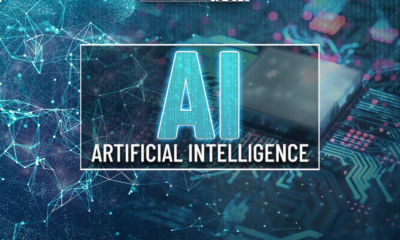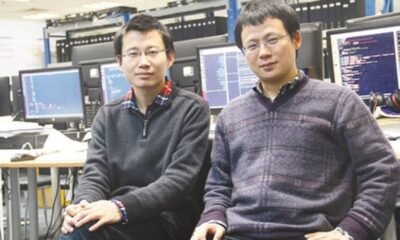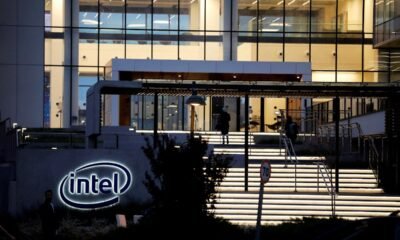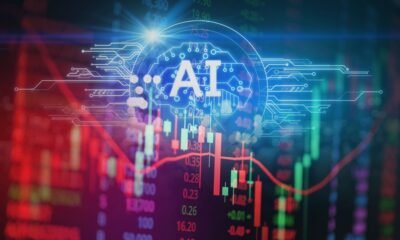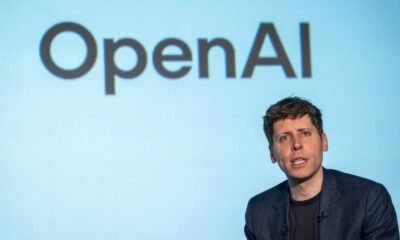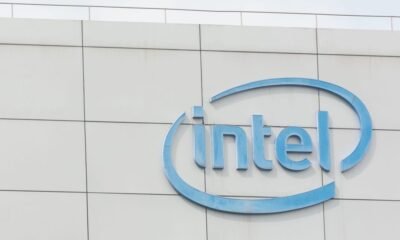Tools & Platforms
AI-driven disruption at Intel puts 25,000 jobs at risk: What tech graduates in the US must do to remain employable
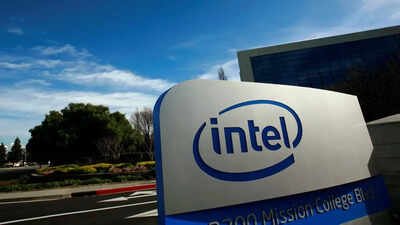
The age of AI is no longer coming, it’s here. And it’s rewriting the rules of employment across Silicon Valley. Intel’s decision to lay off 25,000 employees is just one chapter in a larger shift shaking the foundations of the US tech industry.For decades, the path into tech was clear: get a degree, learn to code, land a stable job at a big-name company. But in 2025, that playbook is no longer guaranteed to work.Intel’s sweeping layoffs, part of a larger wave of over 100,000 job losses at major US tech companies this year, reflect more than just economic pressure. They reveal a deep, structural realignment. Artificial intelligence is rapidly automating traditional roles, while employers reorient around leaner, AI-native teams that prioritize automation, data, and scalable intelligence over headcount.For students and early-career professionals, this moment demands urgent reflection: Are you preparing for the tech industry that was, or the one that’s emerging?
Why the Intel layoffs matter
Intel’s decision to eliminate 25,000 roles is not an isolated move. Microsoft has cut 15,000 jobs this year; Meta has slashed thousands more; IBM, Google, and Amazon are following suit. But what’s striking isn’t just the volume, it’s who is being cut.Jobs in software testing, routine backend development, technical support, and even HR are increasingly handled by AI tools and bots. Some layoffs have replaced human teams entirely with LLM-driven agents or cloud-based automation platforms. In response, companies are redirecting resources toward AI infrastructure, machine learning R&D, and advanced cloud systems.In short, the industry is no longer growing by adding people. It’s growing by upgrading systems. And that means not all tech jobs are safe: only the most adaptable, AI-integrated ones are.
The new hiring reality
Despite the layoffs, hiring hasn’t stopped altogether. In fact, many companies are still recruiting, just not in the same places.Roles in machine learning, AI engineering, prompt design, data science, cybersecurity, and cloud architecture remain in demand. But these positions come with a higher bar. Employers now expect graduates to enter the job market with real-world project experience, familiarity with modern AI tools, and the ability to contribute from day one.Degrees still matter, but they are no longer enough on their own.
What graduates must do now
Adaptability is the new employability. To survive and succeed in this transformed job market, US tech graduates need to evolve beyond traditional skill sets.The first step is developing AI fluency. That means learning how to work with machine learning frameworks like PyTorch or TensorFlow, understanding how LLMs (large language models) operate, and experimenting with tools like OpenAI’s APIs, Google Vertex AI, or LangChain.Equally important is building a portfolio. Employers want evidence of how you think and what you can build—not just a transcript. Personal projects, GitHub repositories, AI demos, and open-source contributions can be more persuasive than a résumé alone.Short-term certifications in cloud platforms, AI product management, or data analytics can also sharpen your edge, especially in a crowded field. But credentials should complement—not replace—deep learning and practice.Finally, be prepared to look beyond Big Tech. While companies like Intel are shrinking their workforces, AI startups, health tech firms, financial services, and even public sector organizations are ramping up tech hiring. The jobs are out there, but they won’t always be in the places students expect.
From job-seeking to value-creating
The most successful graduates in this new landscape won’t be those who simply check all the boxes, they’ll be the ones who bring original thinking, creative problem-solving, and AI-powered productivity to the table.Employers today aren’t hiring people to fill gaps in old workflows. They’re looking for individuals who can design better workflows, integrate smarter tools, and solve complex problems in new ways.AI isn’t just a disruptor, it’s also a powerful tool for those who know how to use it.
The AI shift is permanent
Intel’s layoffs are not a blip. They’re part of a permanent shift in how the US tech industry operates. For aspiring engineers, developers, analysts, and designers, the message is clear: resilience, adaptability, and lifelong learning will define success.This is not the end of opportunity, but it is the end of the old roadmap.To remain employable in the AI era, tech graduates in the US must rethink their approach: not just studying for a degree, but preparing for a future that rewards initiative, intelligence, and innovation.TOI Education is on WhatsApp now. Follow us here.
Tools & Platforms
Your browser is not supported
northjersey.com wants to ensure the best experience for all of our readers, so we built our site to take advantage of the latest technology, making it faster and easier to use.
Unfortunately, your browser is not supported. Please download one of these browsers for the best experience on northjersey.com
Tools & Platforms
Your browser is not supported
jsonline.com wants to ensure the best experience for all of our readers, so we built our site to take advantage of the latest technology, making it faster and easier to use.
Unfortunately, your browser is not supported. Please download one of these browsers for the best experience on jsonline.com
Tools & Platforms
Microsoft Launches In-House AI Models to Reduce OpenAI Dependence
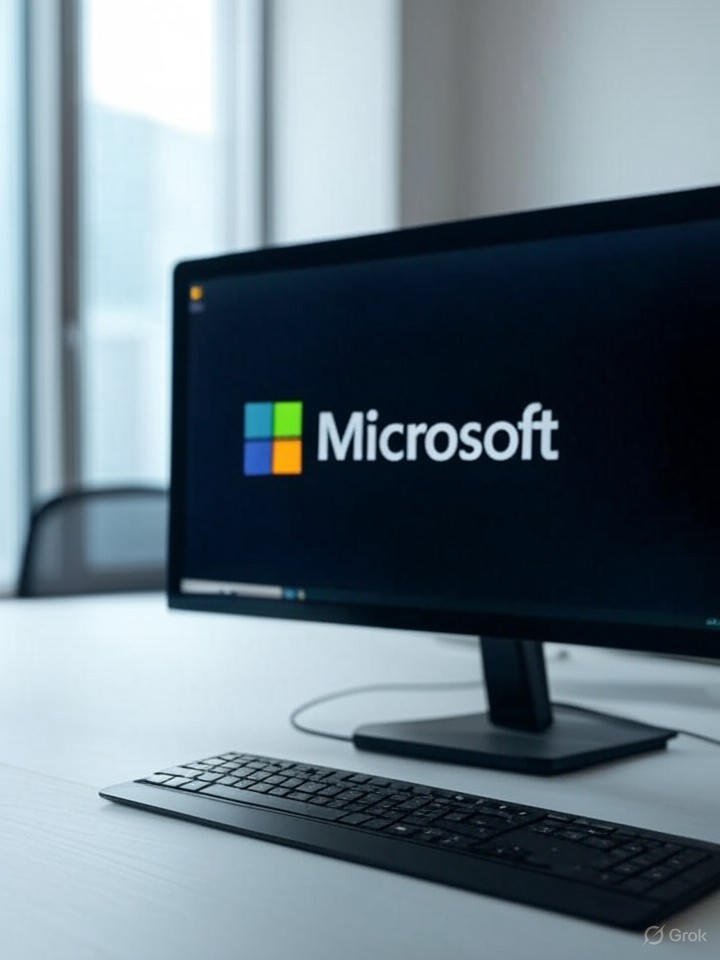
Microsoft’s Strategic Pivot in AI Development
Microsoft Corp. has unveiled its first in-house artificial intelligence models, marking a significant shift in its approach to AI technology. The company announced MAI-Voice-1, a specialized model for speech generation, and a preview version of MAI-1, a foundational model aimed at broader applications. This move comes amid growing tensions in Microsoft’s partnership with OpenAI, where the tech giant has invested billions but now seeks greater independence.
According to details reported in a recent article by Mashable, these models are designed to enhance Microsoft’s Copilot AI assistant, integrating into products like Bing and Windows. The launch raises questions about the future of Microsoft’s collaboration with OpenAI, as the company aims to reduce its reliance on external AI providers.
Implications for the OpenAI Partnership
Industry observers note that Microsoft’s heavy investment in OpenAI, exceeding $10 billion, has fueled much of its AI advancements. However, disputes over intellectual property and revenue sharing have prompted this internal development push. The MAI-1 model, in particular, is being positioned as a direct competitor to OpenAI’s offerings, potentially challenging the startup’s dominance in generative AI.
As highlighted in reports from Reuters, Microsoft began training MAI-1 as early as last year, with parameters estimated at around 500 billion, making it a heavyweight contender against models like GPT-4. This internal effort is led by former executives from AI startup Inflection, bringing expertise to bolster Microsoft’s capabilities.
Technical Innovations and Efficiency Gains
MAI-Voice-1 stands out for its efficiency in generating high-quality audio, trained on a modest 100,000 hours of data compared to competitors’ larger datasets. This approach not only cuts costs but also accelerates deployment, allowing Microsoft to offer faster, more affordable AI features to consumers and businesses.
The preview of MAI-1 focuses on text-based tasks, with plans for multimodal expansions including image and video processing. Insights from Technology Magazine suggest these models could provide advanced problem-solving abilities, integrating seamlessly into Microsoft’s ecosystem and potentially lowering operational expenses.
Market Competition and Future Outlook
This development intensifies competition in the AI sector, pitting Microsoft against not only OpenAI but also Google and Anthropic. By building in-house models, Microsoft aims to control its AI destiny, mitigating risks associated with third-party dependencies. Analysts predict this could lead to more innovative features in Copilot, enhancing user experiences across Microsoft’s software suite.
However, the partnership with OpenAI isn’t dissolving entirely; Microsoft continues to leverage OpenAI’s technology while developing its own. A report in CNBC indicates that internal testing of MAI-1 is already underway, with public previews signaling rapid progress toward widespread adoption.
Broader Industry Ramifications
For industry insiders, this signals a maturation of AI strategies among tech giants, emphasizing self-sufficiency. Microsoft’s move could inspire similar initiatives elsewhere, fostering a more diverse array of AI tools. Yet, challenges remain, including ethical considerations and regulatory scrutiny over AI’s societal impact.
Ultimately, as Microsoft refines these models, the tech world watches closely. The balance between collaboration and competition will define the next phase of AI innovation, with Microsoft’s in-house efforts potentially reshaping market dynamics for years to come.
-
Tools & Platforms3 weeks ago
Building Trust in Military AI Starts with Opening the Black Box – War on the Rocks
-

 Business2 days ago
Business2 days agoThe Guardian view on Trump and the Fed: independence is no substitute for accountability | Editorial
-

 Ethics & Policy1 month ago
Ethics & Policy1 month agoSDAIA Supports Saudi Arabia’s Leadership in Shaping Global AI Ethics, Policy, and Research – وكالة الأنباء السعودية
-

 Events & Conferences3 months ago
Events & Conferences3 months agoJourney to 1000 models: Scaling Instagram’s recommendation system
-

 Jobs & Careers2 months ago
Jobs & Careers2 months agoMumbai-based Perplexity Alternative Has 60k+ Users Without Funding
-

 Funding & Business2 months ago
Funding & Business2 months agoKayak and Expedia race to build AI travel agents that turn social posts into itineraries
-

 Education2 months ago
Education2 months agoVEX Robotics launches AI-powered classroom robotics system
-

 Podcasts & Talks2 months ago
Podcasts & Talks2 months agoHappy 4th of July! 🎆 Made with Veo 3 in Gemini
-

 Podcasts & Talks2 months ago
Podcasts & Talks2 months agoOpenAI 🤝 @teamganassi
-

 Mergers & Acquisitions2 months ago
Mergers & Acquisitions2 months agoDonald Trump suggests US government review subsidies to Elon Musk’s companies


